We took our fifth-wheel to its winter home this September, so we didn’t have to worry about bad weather when we go down again in November. However, we did get to experience some weather with the tail end of the “monsoon season.” The Arizona monsoon season is brought on by a shift in wind direction which brings the moisture from the Pacific Ocean and the Gulf of Mexico. The combination of desert heat and moisture mean that there are periodic rain showers and thunderstorms. Here’s our site located just outside of Tucson, with our view of a ridge in Saguaro National Park.
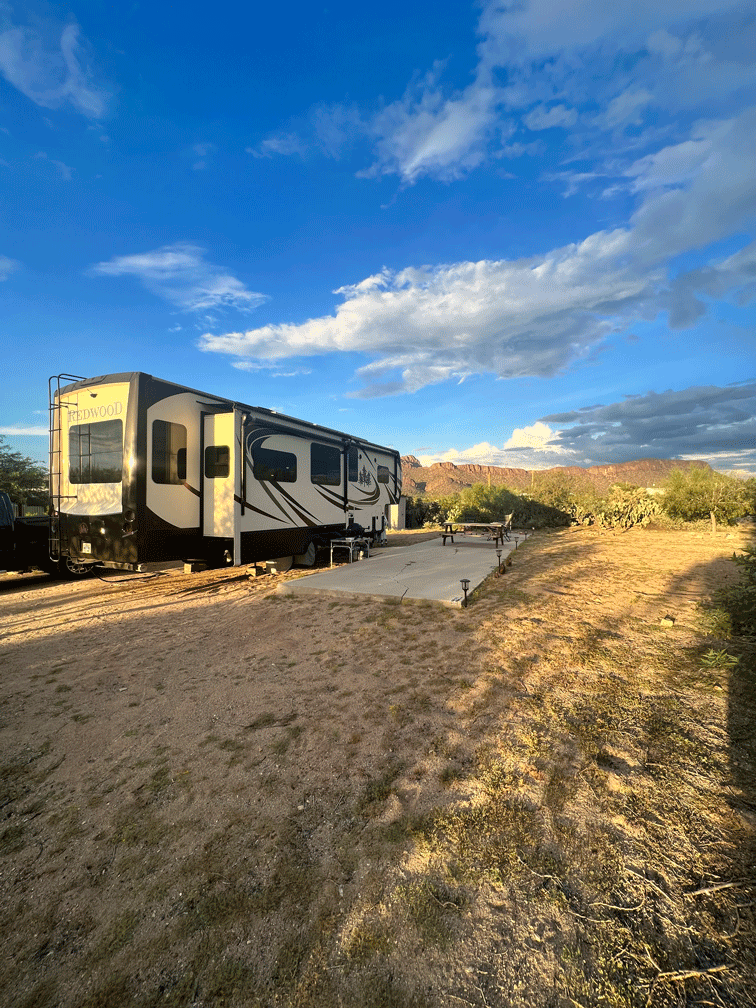
It was warmer than we like and very humid. We avoided cooking inside, so we used our portable induction plate and barbecue a lot.
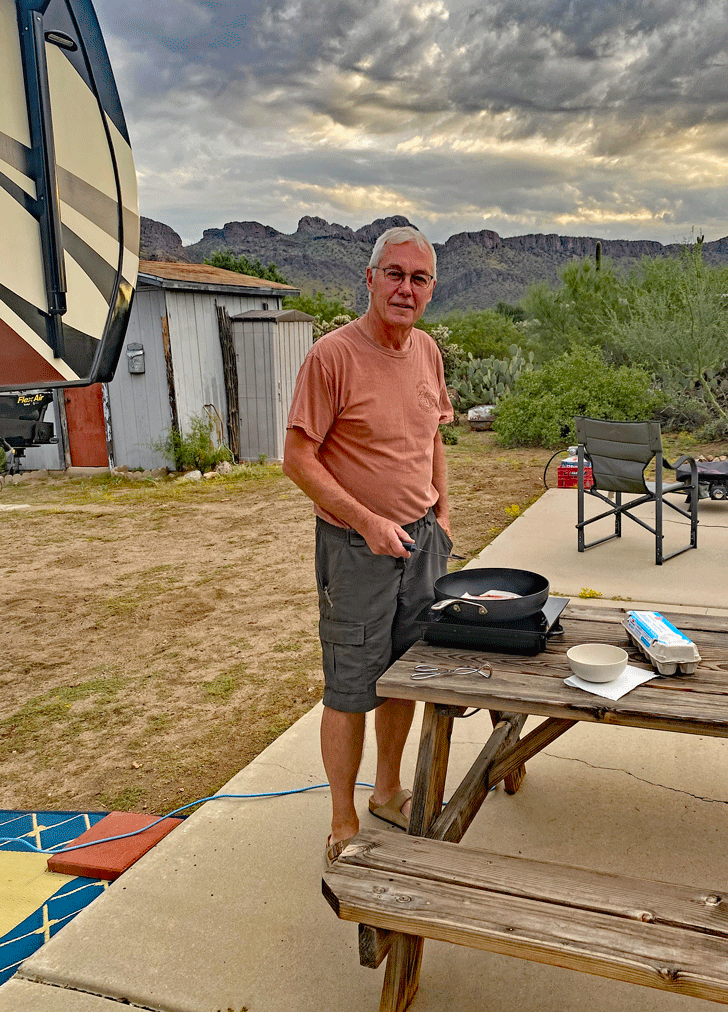
The clouds made for interesting skies. Here’s a view of El Rio Open Space Preserve, where we often go birding. We saw many of the birds we are familiar with: a Greater Roadrunner, Abert’s Towhees, Gila Woodpeckers, and both Green and Great Blue Herons, for example. Some of the waterfowl were a little harder to identify, because they were not in breeding plumage, so we spent some time discerning Blue-winged Teals from Cinnamon Teals. But we could always count on easily identifying American Coots.
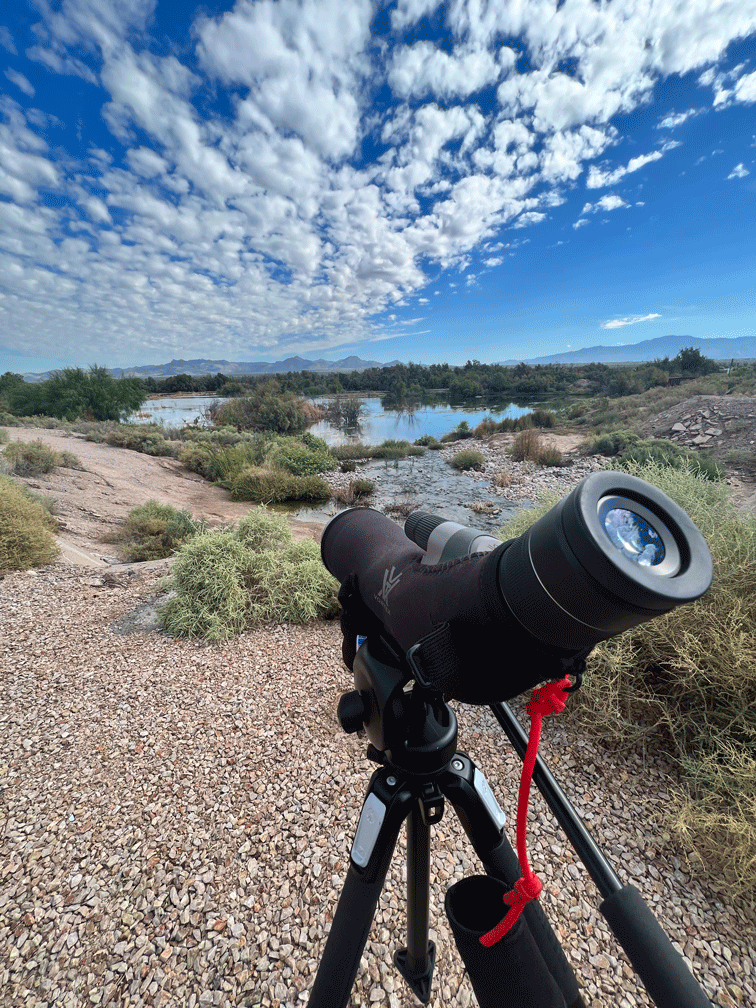
Another of our “go-to” birding spots is Reid Park, a park in the centre of the city. We were lucky to see this Forster’s Tern swooping over the pond.
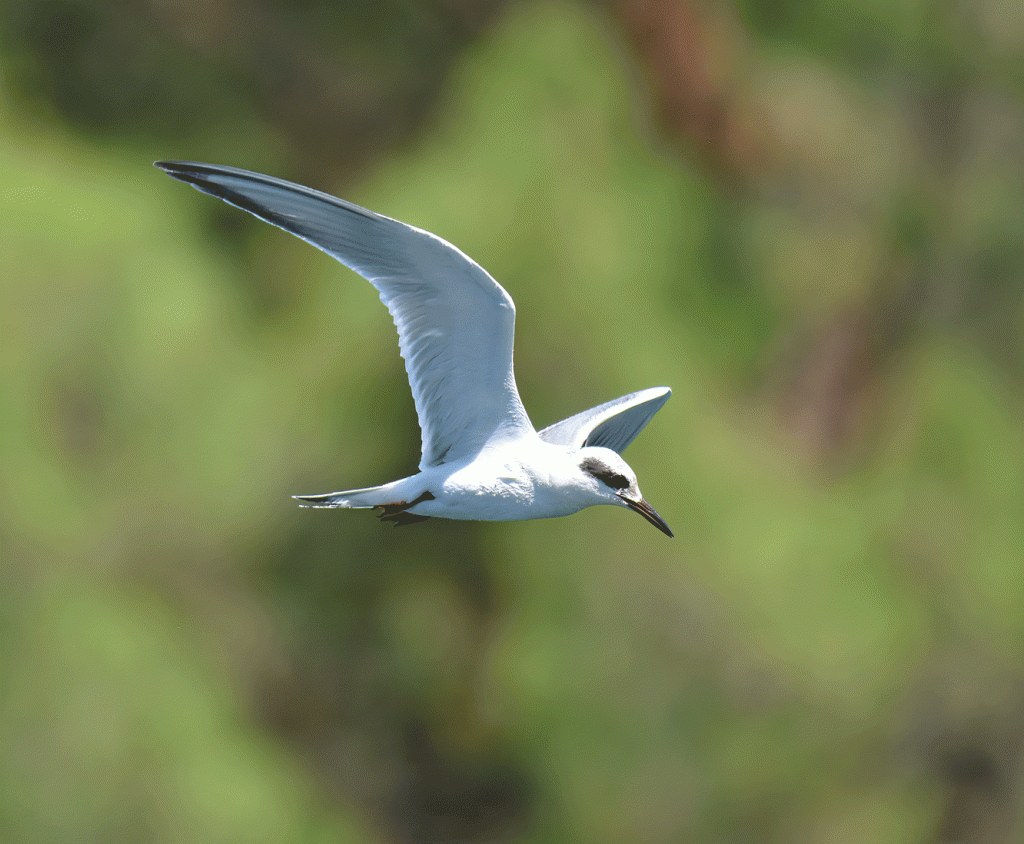
Madera Canyon is about an hour south of our place in Picture Rocks and at a higher elevation, so it was a more comfortable temperature for us. The picnic area usually yields several species of birds, but the day we went, there were only four. But the twenty-two Turkey Vultures that were roosting at the picnic site (on the tables, on the ground, in the trees) made up for it.

The feeders at Santa Rita Lodge are within walking distance of the picnic site, so we walked up to see what was there. We were so early that the hummingbird feeders weren’t out yet, but the regulars (Lesser Goldfinches, Acorn Woodpeckers and Mexican Jays) entertained us.

The star of the show, the Rivoli’s Hummingbird also made an appearance. In this photo, he is waiting patiently (?) for the nectar to appear.

Next we birded the Proctor Road trail in Madera Canyon, and ran across a mixed flock with Bridled Titmice and Nashville and Black-throated Gray Warblers. They flitted though the trees making a good photo difficult to obtain. We were finished there by 10 am, so we drove down to the Tubac area.
We like the Anza trail that goes along the Santa Cruz River and is accessed at Santa Gertrudis Lane, especially on this day, because it was shaded and it was getting hot. We saw a new bird for us: a Thick-billed Kingbird. These kingbirds winter in Mexico and only come up in the summer to a few Arizona locations with cottonwoods along permanent streams. This guy was hanging around a little longer than the rest of them, which was lucky for us.

There were a pair of Inca Doves in the trees along the riverbank. All their feathers are dark-edged which creates a beautiful scaly pattern.

We love the Arizona-Sonora Desert Museum. In the hot months, they open at 7:30 am, so one day we got there for opening. This “on-glove” Burrowing Owl was just outside the entrance. They are small owls (less than 25 cm / 10 in) with long legs.
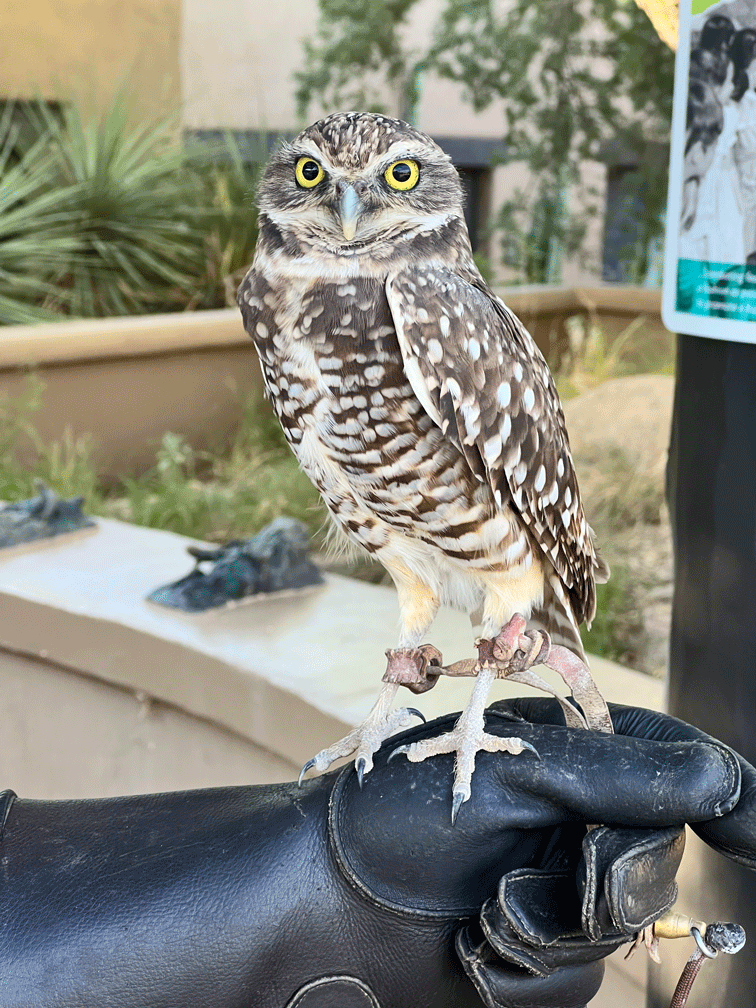
We saw another owl in a covered spot inside the ground of the museum. The docent who was handling this Barn Owl shared lots of interesting information about this species and owls in general. Barn Owls are strictly nocturnal and rely on their acute hearing to catch their prey of rodents and small creatures. The Great-horned Owl is their predator, so by avoiding the lighter parts of the night when those owls are hunting, they stay safer.
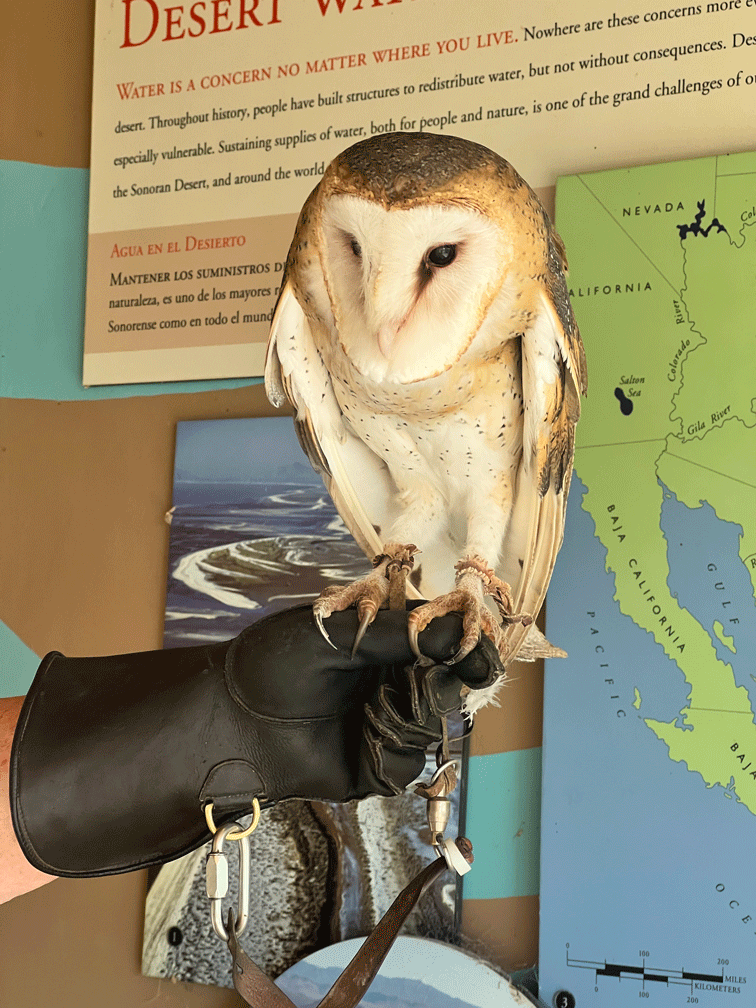
We were lucky enough to see lizards on this visit. This Clark Spiny Lizard was in the lizard enclosure which we always check, but rarely see any lizards. It definitely was warm enough for it to be moving around. Its body size (snout to vent) was about 13 cm or 5 in.

This Spiny-tailed Iguana was climbing the rocks near the entrance to the museum. Although they are not native to Arizona, they are found in the Sonora Desert in Mexico. They were introduced to the museum grounds in the 1970s and have free range of the grounds. They haven’t been reported off of the museum grounds, but perhaps if they did leave, they would fall prey to coyotes, bobcats and hawks. This one was about 60 cm (24 in) long from head to tail.

The ocotillo leaves were the biggest we’ve ever seen, probably due to all the rainfall. Later in the year, the ocotillo will revert to looking like dead sticks until it rains again.
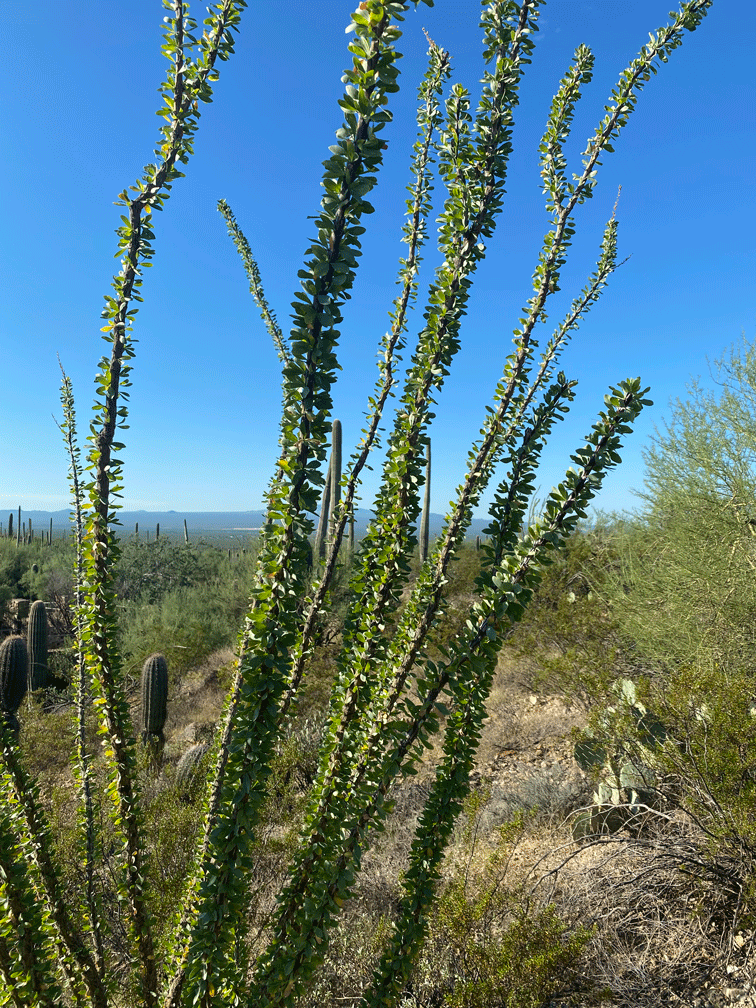
This Graham Fishhook cactus with red fruit was growing in the shade of a Palo Verde tree. This small cactus was about 10cm (4 in) tall, so its easy to miss.

This Mexican Lime Barrel is one of the flashier cacti, and the only cactus we saw blooming. It is native to Mexico.
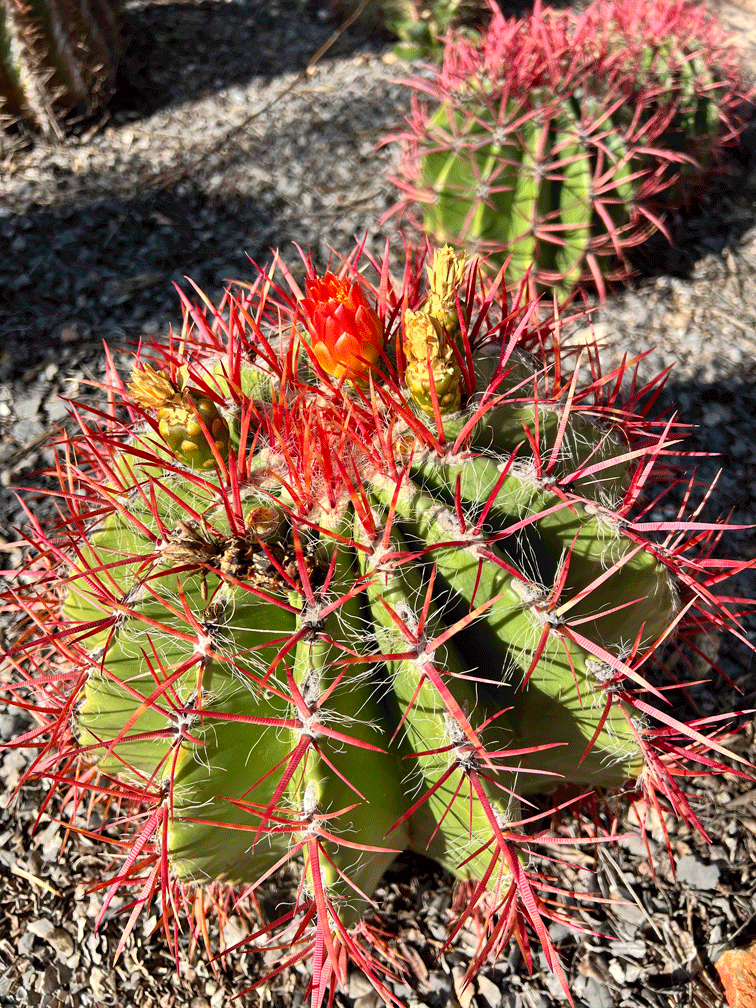
We saw some wonderful insects. The most colourful was this Pipevine Swallowtail butterfly.
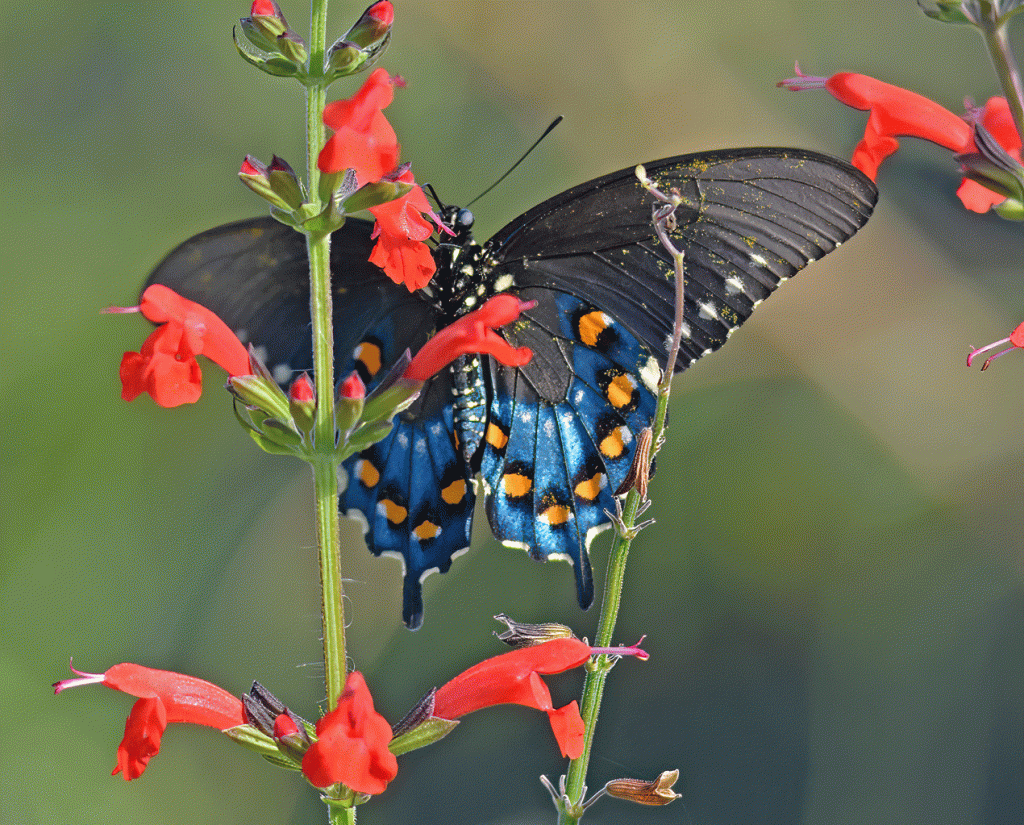
The Pipeline swallowtail caterpillar feeds on plants in the Aristolochia genus. The docent that was in the butterfly garden showed us which plants they eat, and we found the caterpillar. The caterpillar’s body stores some of the plant toxins which makes them poisonous to predators.
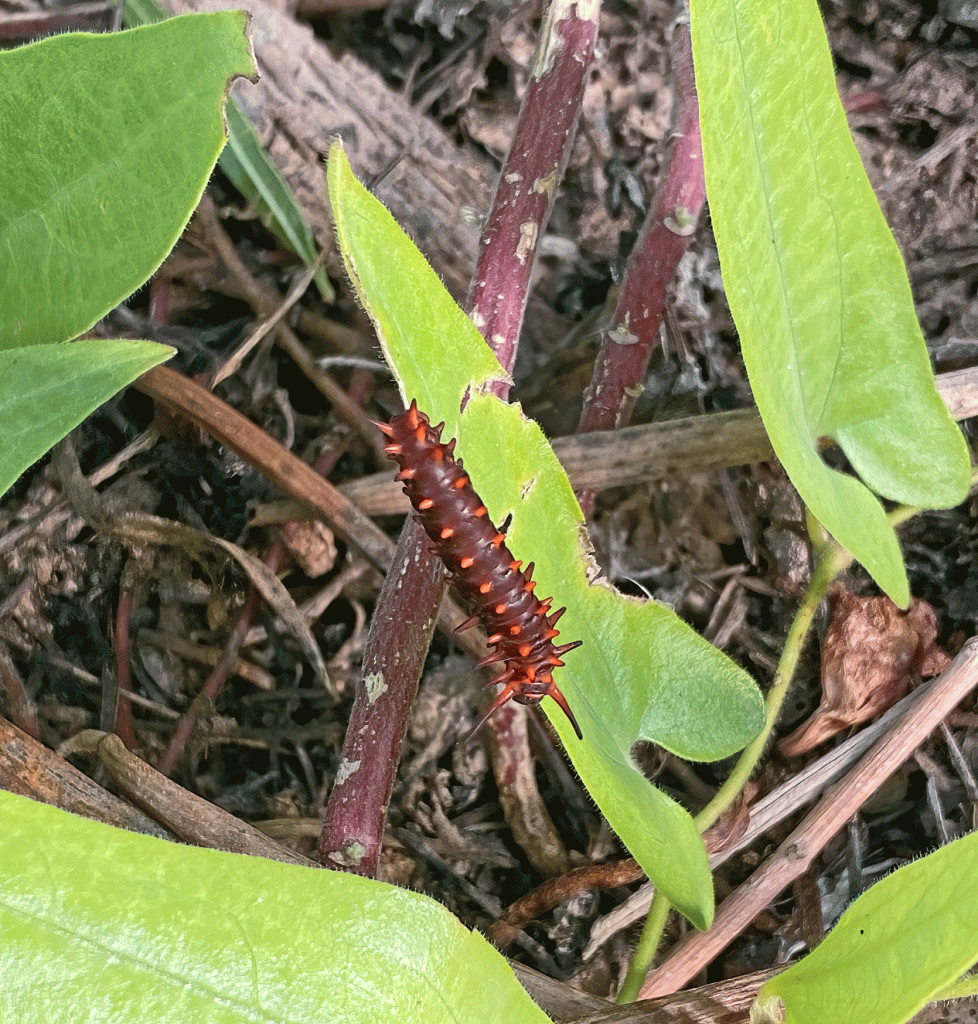
When we were watching the butterfly with our binoculars, this Praying Mantis came into focus. Mantises are an order of insects that contain over 2,400 species, so we can’t specify which kind this one is. All mantises have triangular heads with bulging eyes.

We saw this Yellow Garden spider when we were birding in near Tubac. It’s body was about the size of a loony, so it was probably a female because they are generally bigger than males.

Since it was so hot, we got up before dawn so we could be biking by 7 am. Here’s Wendy at the Tortolita Preserve. Notice how lush the foliage is.
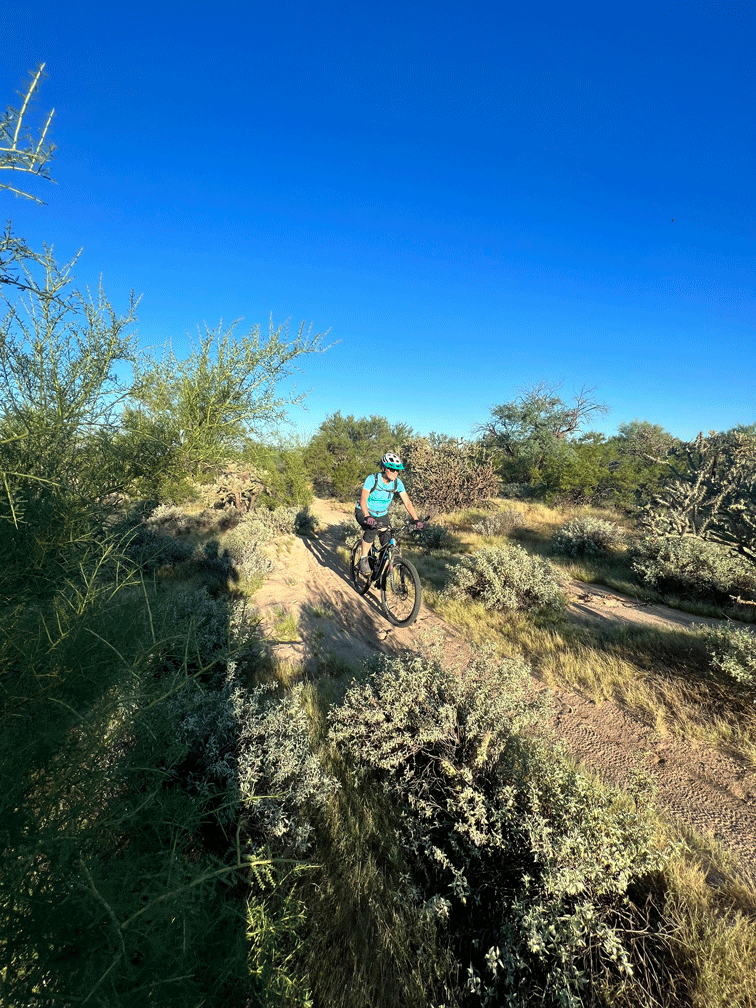
Here’s a photo of the same area from early 2021, with sparser vegetation. We’ve included this photo of the famous saguaro cactus, (Strong-arm) because it toppled over in August of 2022. Look at the next photo for its current state.
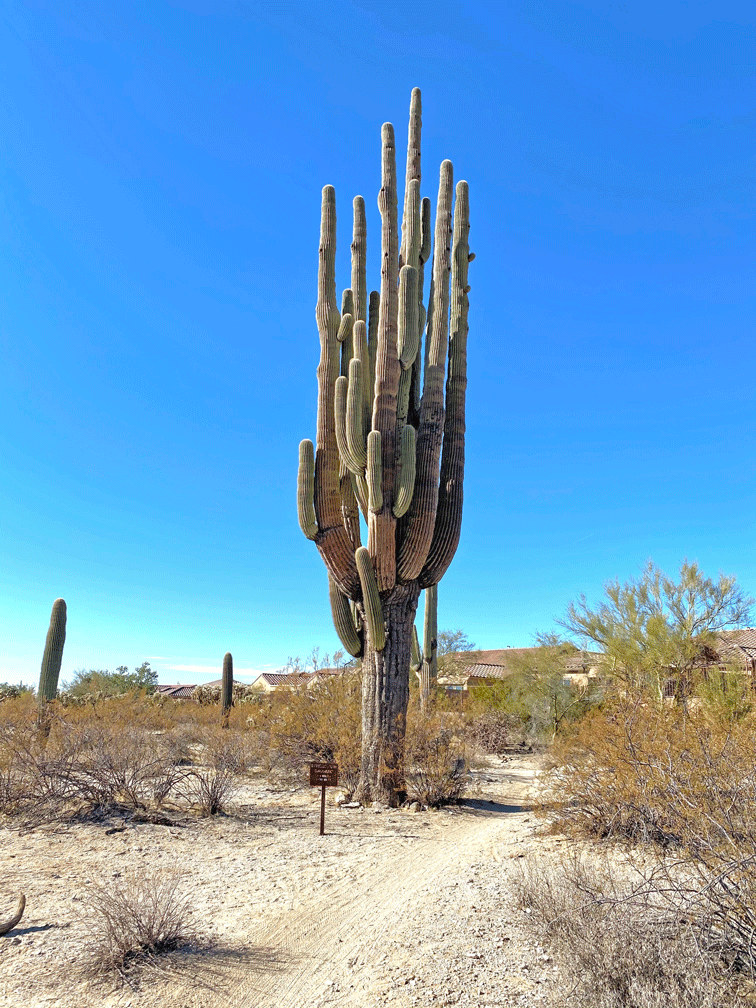
This photo was taken from almost the same spot as the previous one. All that is left standing of Strong-arm is the base, with all the arms now on the ground. The trail has been re-routed around the debris and it will be left to rot in place. It is thought that it was 150 – 200 years old, but it could be older. Experts believe it died from old age.
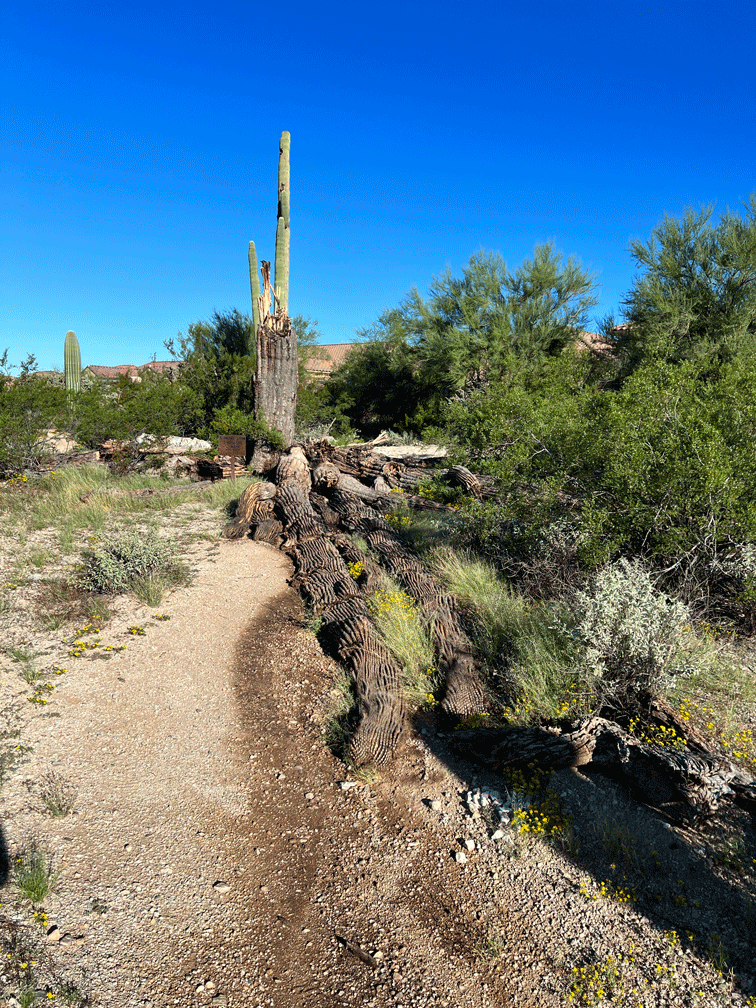
A blog post would not be complete without a sunset shot. The clouds added a different dimension.

We made our way home with a side-trip to New Mexico to bird at Bosque del Apache NWR. There was nothing remarkable; the birding is better there from November to March. We checked out the nearby Sevilleta NWR which had plenty of swallows on the hot afternoon we visited.
We stopped in Green River, Utah for the night. The next day we drove through Salt Lake City and stopped just north of SLC at the Bear River Migratory Bird Refuge to break-up the long drive. We had great views of American Pelicans, American Avocets, Black-necked Stilts as well as huge flocks of migratory waterfowl. We made it to Dillon, Montana that day.
Our final day’s drive was from Dillon to home, with a short walk into the Ninepipe NWR (Trumpeter Swans, (more pelicans and lots of waterfowl) and a break for lunch at our favourite restaurant at Tamarack Brewing in Lakeside, Montana.
So, it’ll be a month or two until our next post.
